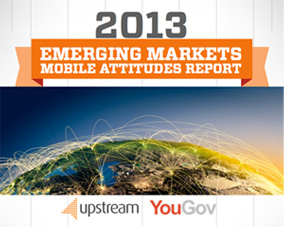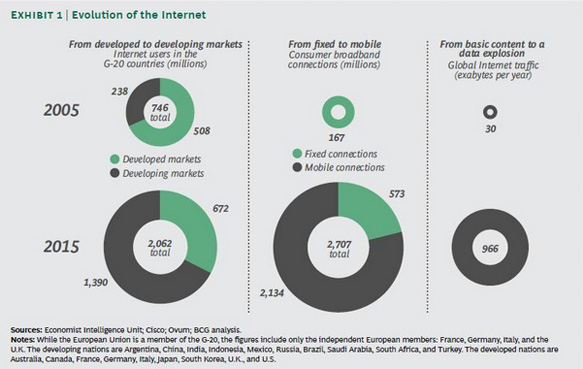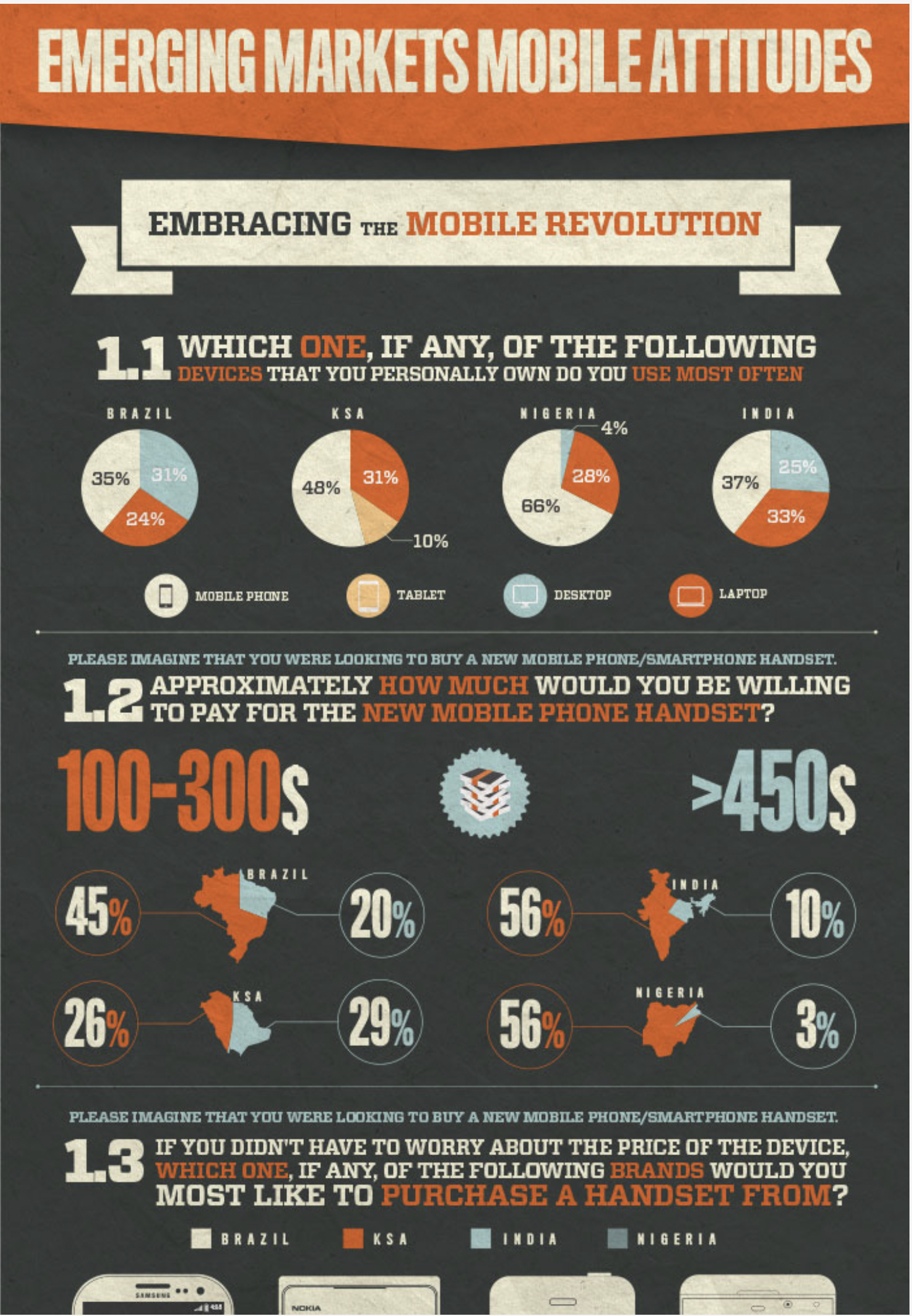Upstream’s increasing strategic focus on emerging markets began simply: follow the next billion mobile consumers
Upstream/ YouGov & Vanson Bourne, 15th March 2013
In fact, that billion is just the beginning. Ovum expects China, India and Indonesia alone to share 3 billion mobile subscriptions between them by 2017. Over the next 3 years they expect over 175 million new connections in Sub-Saharan Africa, and network infrastructure for high speed mobile internet is rapidly improving. In developed markets meanwhile, subscription growth is moribund.
Current mobile trends could start a second wave of mobile-led economic development as powerful as that prompted by the original launch of mobile phones. Their spread in poor countries is not just reshaping the industry—it is changing the world.
The Economist
But headline numbers tell only part of the story
And easy assumptions about mobile in emerging markets need scrutiny. For instance, many in the industry see the emergence of sub-$100 smartphones as the sole key to mobile revenue growth in emerging markets. Our research shows a more nuanced picture: on the one hand consumers willing to pay higher prices for the phones they want, and on the other high untapped demand for useful feature-phone content.
Our focus in on mobile monetization, and the pivotal question there is around payments. Credit and debit card penetration in emerging markets is low, creating a major obstacle to the app store model that has so rapidly come to dominate mature markets.
Our research demonstrates that emerging market consumers would in large part prefer to make e-commerce payments through their mobile operators, whose infrastructure already supports cash pre-pay models as well as post-pay billing. A huge opportunity for operators, but one they will have to work hard to maintain.
“A small coffee grower in Costa Rica keeps in touch with international market prices, and ultimately arranges sale and pick-up of his crop, via his mobile phone. A family in the Philippines, dependent on money from a member working as a nurse in the United States can pick it up at a local McDonald’s, transferred quickly and inexpensively by a mobile phone remittance system. It may seem obvious, but those in the Base of the Economic Pyramid cannot join the global economy, and benefit from it, until they are connected to iT.”
If emerging markets represent the biggest mobile opportunity for the future, they also deserve the closest analysis. What do consumers in these regions really want?
While the current debate focuses on low-cost smartphones, what devices do emerging market consumers actually want? And at what price point? Does brand desirability override all other factors? Will the winning brands in developed markets also be the winners in the emerging markets?
Our 2013 Emerging Markets Mobile Attitudes Report set out to answer these questions and more. We commissioned YouGov & Vanson Bourne to conduct an independent poll of 3500+ representative adults in Brazil, India, Saudi Arabia, Nigeria, UK and US to deliver insights into the differences between mobile consumers in emerging and developed markets.





